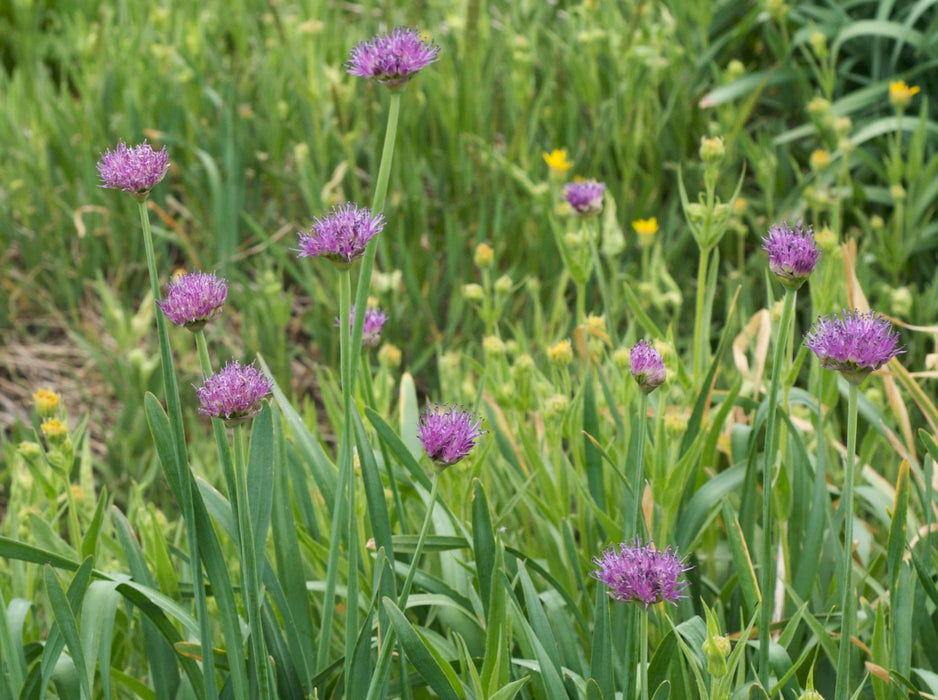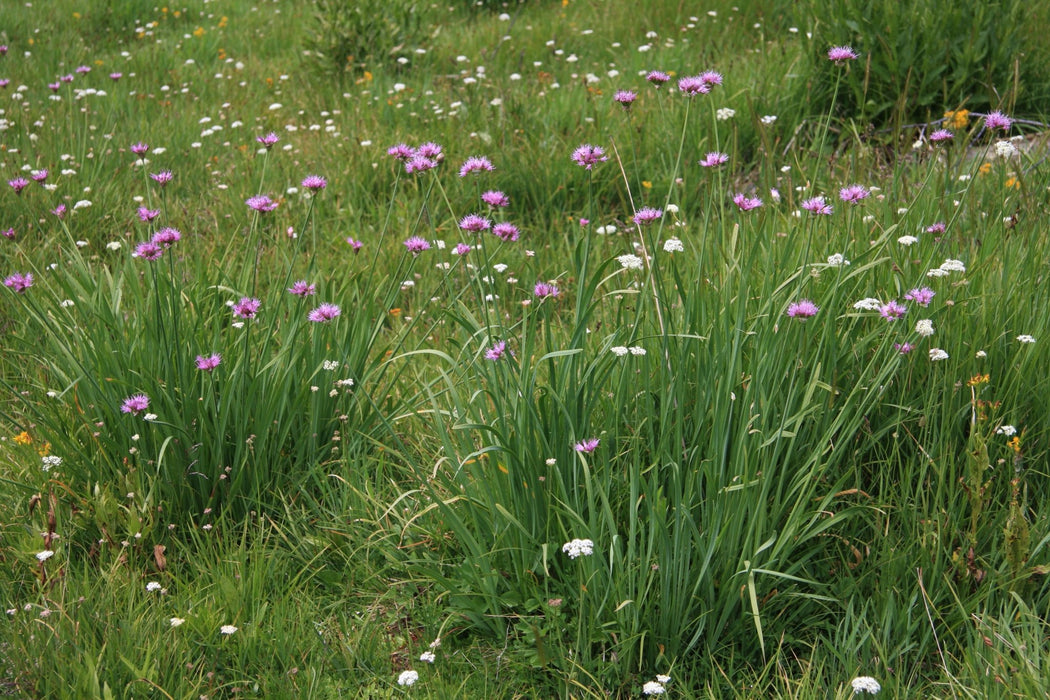
Swamp Onion Seeds (Allium validum)
Possibly the largest and showiest of our native onions, as the name suggests, this is a species of damp spaces.
All parts of this 3-foot-tall plant are edible, from the bulb and foliage to the vivid, pink flowers. However, the fun insect activity in the flowers will make you want to just watch this plant grow. We see fascinating types of flies, small solitary wasps, beetles, and many kinds of bees visiting swamp onion flowers.
Although naturally widespread (from Pacific Coast, east to the Rocky Mountains) swamp onion is mostly found at medium to higher elevations. It can tolerate low-elevation life just fine, but will do best in cooler micro-climates with damp, but well-drained fertile soils. We think it has very good potential as a rain garden plant.
Everything we try to offer has an entire rich cosmos of ecological connections, and it gets to be too much to try and capture those stories in a quick product description. Still, our wild onions have such interesting pollinator associates, that it’s worth including a brief list of at least some of the western bee species observed on wild onion flowers:
Andrenidae Family: Blue-and-Black Andrena (Andrena nigrocaerulea)
Apidae Family: Bear-like Digger Bee (Anthophora ursina), Black-notched Bumble Bee (Bombus bifarius), Indiscriminate Cuckoo Bumble Bee (Bombus insularis), Van Dyke’s Bumble Bee(Bombus vandykei), Edwards’s Long-horned Bee (Eucera edwardsii)
Megachilidae Family: Anthidium banningense, Chelostoma minutum, Red-footed Cuckoo Leaf-cutter (Coelioxys rufitarsis), Hoplitis fulgida, Osmia aglaia, Osmia albolateralis, Large Indigo Mason Bee (Osmia atrocyanea), Osmia bakeri, Osmia californica, Yellowish Green Mason Bee (Osmia calla), Blue Mason Bee (Osmia cyanella), Osmia exigua, Kincaid’s Mason Bee (Osmia kincaidii), Osmia penstemonis, Friendly Mason Bee (Osmia proxima), Small Mason Bee (Osmia pusilla), Osmia trevoris
It’s likely the Halictidae family (not well documented with our Northwestern onions), probably represents an even larger and more diverse group of bee visitors than all of the other families listed above!
Approximately 150 seeds (0.5 grams).

